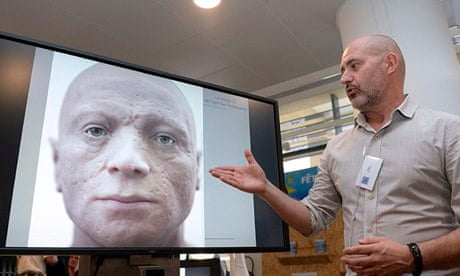Ever since he lost his head to Madame Guillotine in 1794, the historical jury has been out on the life and legacy of Maximilien de Robespierre, French revolutionary and architect of la Grande Terreur.
Was he, as his supporters suggested, "the incorruptible", a staunch advocate for the working classes, the poor and the dispossessed? Or was he, as his enemies cried, "the bloody dictator", a megalomaniacal fanatic, monster and later inspiration for Hitler and Stalin?
While Robespierre's character and motivations continue to divide, forensic scientists say healthwise, he was riddled with jaundice, pockmarked, twitchy and most likely already on his last legs when he was executed.
A new report claims the revolutionary probably suffered from the crippling auto-immune disorder sarcoidosis, in which the body's defences overreact and attack its own tissues and organs.
Philippe Charlier, one of Europe's leading historical forensic scientists, of the University of Versailles, and Philippe Froesch, of the Parc Audiovisual de Catalunya in Barcelona, published their conclusions in a letter to the Lancet medical journal published on Friday.
They came to their conclusions after reconstructing Robespierre's face from contemporary portraits, and examining his death mask made by the now famous waxwork genius Madame Tussaud, as well as studying witness accounts of the time.
Robespierre is known to have suffered eyesight problems, severe nosebleeds, yellow skin, leg ulcers and twitching eyes and mouth, as well as frequent outbreaks of skin disease. "Several clinical signs were described by contemporary eyewitnesses," the scientists wrote.
"The retrospective diagnosis that includes all these symptoms is diffuse sarcoidosis … extending to the upper respiratory tract, the eyes and either the liver or pancreas."
Sarcoidosis, also known as Besnier-Boeck-Schaumann disease, can cause inflammatory cells known as granulomas in organs, most often the lungs. Doctors say the syndrome can appear similar to cancer.
It was first described in medical circles in 1877 by British doctor Sir Jonathan Hutchinson. The exact cause is unknown, and while it can clear up on its own, the lung scarring or infection can lead to respiratory problems and death.
"We do not know which treatment was given by his personal physician Joseph Souberbielle, but fruits might have been included – in view of his very high consumption of oranges – along with baths and bloodletting," wrote the forensic scientists adding, perhaps a little unnecessarily: "His disease did not play any part in his death."

Comments (…)
Sign in or create your Guardian account to join the discussion